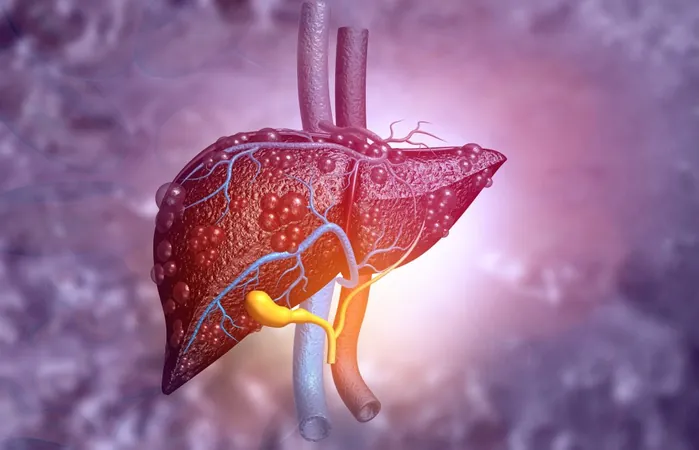
The Complex Landscape of Advanced Maternal Age: Navigating Risks and Opportunities in Delayed Childbearing
2025-04-06
Author: Li
The trend of delaying childbirth is increasingly notable worldwide, and India is no exception.
As women gain greater autonomy and access to education and career opportunities, many are choosing to postpone starting families. While this shift signifies progress, it also brings a set of unique health challenges associated with advanced maternal age (AMA), particularly for women who conceive after the age of 35.
Understanding the Risks of Advanced Maternal Age
Advanced maternal age comes with heightened risks for both mothers and their babies. According to the American College of Obstetricians and Gynecologists, pregnancy in women aged 35 and older is classified as AMA. Women in this age group face higher risks of experiencing complications such as ectopic pregnancies, preeclampsia, and various placental issues.
Moreover, they are more likely to develop chronic health conditions like hypertension and diabetes, which can elevate the chances of severe outcomes during childbirth.
In India, about 17% of women give birth after age 35, contributing to the country’s maternal mortality rate, which accounts for approximately 12% of global maternal deaths. This alarming statistic translates to an estimated 1.3 million maternal deaths over the last two decades, primarily from medical causes that increase with age.
Additionally, high-risk pregnancies, often correlated with advanced maternal age, make up 75% of perinatal deaths in the country.
The Implications for Infant Health
Children born to older mothers face their own set of risks. Studies indicate that pregnancies in this demographic are linked to a higher risk of chromosomal abnormalities, such as Down syndrome, and structural defects, especially concerning the heart and limbs. Miscarriage rates also rise significantly with age; women over 40 are 2.4 times more likely to lose a pregnancy compared to those under 35.
Premature births and low birth weights further complicate matters, potentially resulting in developmental challenges for the children.
A Status Check: Mortality Rates Among Different Age Groups
Data gathered from the National Family Health Survey (NFHS-5) highlights stark disparities in childhood mortality rates based on maternal age. Children born to mothers aged 40-49 face nearly double the mortality rates of those born to mothers aged 20-29. These statistics underscore the urgent need for policies that support older mothers in a rapidly transforming reproductive landscape.
Pathways Forward: Reforming Health Policies
Indian public health initiatives largely focus on the age of first childbirth while neglecting subsequent pregnancies, which can also critically impact maternal and child health outcomes. As many women are now having multiple pregnancies later in life, there is a pressing need for a paradigm shift in health strategies.
Research from the World Health Organization (WHO) suggests that with appropriate medical support, older women can achieve favorable outcomes in pregnancy.
To effectively address these issues, health policymakers must enhance antenatal care and promote targeted interventions, especially risk screening for high-risk pregnancies. Educating women about the risks associated with delayed childbearing is paramount; many remain largely unaware of these implications.
Public health campaigns should convey a balanced view that includes both the risks of early pregnancy and the challenges associated with later childbearing.
Closing the Gap: Addressing Socioeconomic Barriers
Addressing socioeconomic barriers is critical. Workplace policies and support systems must adapt to the realities of women balancing career ambitions with motherhood. Flexible maternity leave, comprehensive childcare options, and enhanced healthcare access—particularly in rural areas—can alleviate some of the pressures that lead women to delay childbearing.
Innovative programs, such as those initiated by the governments of Telangana and Andhra Pradesh, have demonstrated success in training healthcare workers to manage high-risk pregnancies effectively. Expanding such programs to other states could significantly benefit maternal and child health outcomes across diverse regions.
In Conclusion: Confronting the New Normal
As the trend of delayed childbearing solidifies itself as a prevalent reality, understanding the implications of advanced maternal age becomes crucial. While progress has been made, India's maternal health policies must evolve to address these new challenges comprehensively.
By focusing on both the risks and the support structures necessary for older mothers, we can work towards improving health outcomes for mothers and their children alike.
This evolving narrative invites continued discourse and action, as health systems worldwide adapt to support a new generation of mothers in an era characterized by changing reproductive trends.


 Brasil (PT)
Brasil (PT)
 Canada (EN)
Canada (EN)
 Chile (ES)
Chile (ES)
 Česko (CS)
Česko (CS)
 대한민국 (KO)
대한민국 (KO)
 España (ES)
España (ES)
 France (FR)
France (FR)
 Hong Kong (EN)
Hong Kong (EN)
 Italia (IT)
Italia (IT)
 日本 (JA)
日本 (JA)
 Magyarország (HU)
Magyarország (HU)
 Norge (NO)
Norge (NO)
 Polska (PL)
Polska (PL)
 Schweiz (DE)
Schweiz (DE)
 Singapore (EN)
Singapore (EN)
 Sverige (SV)
Sverige (SV)
 Suomi (FI)
Suomi (FI)
 Türkiye (TR)
Türkiye (TR)
 الإمارات العربية المتحدة (AR)
الإمارات العربية المتحدة (AR)